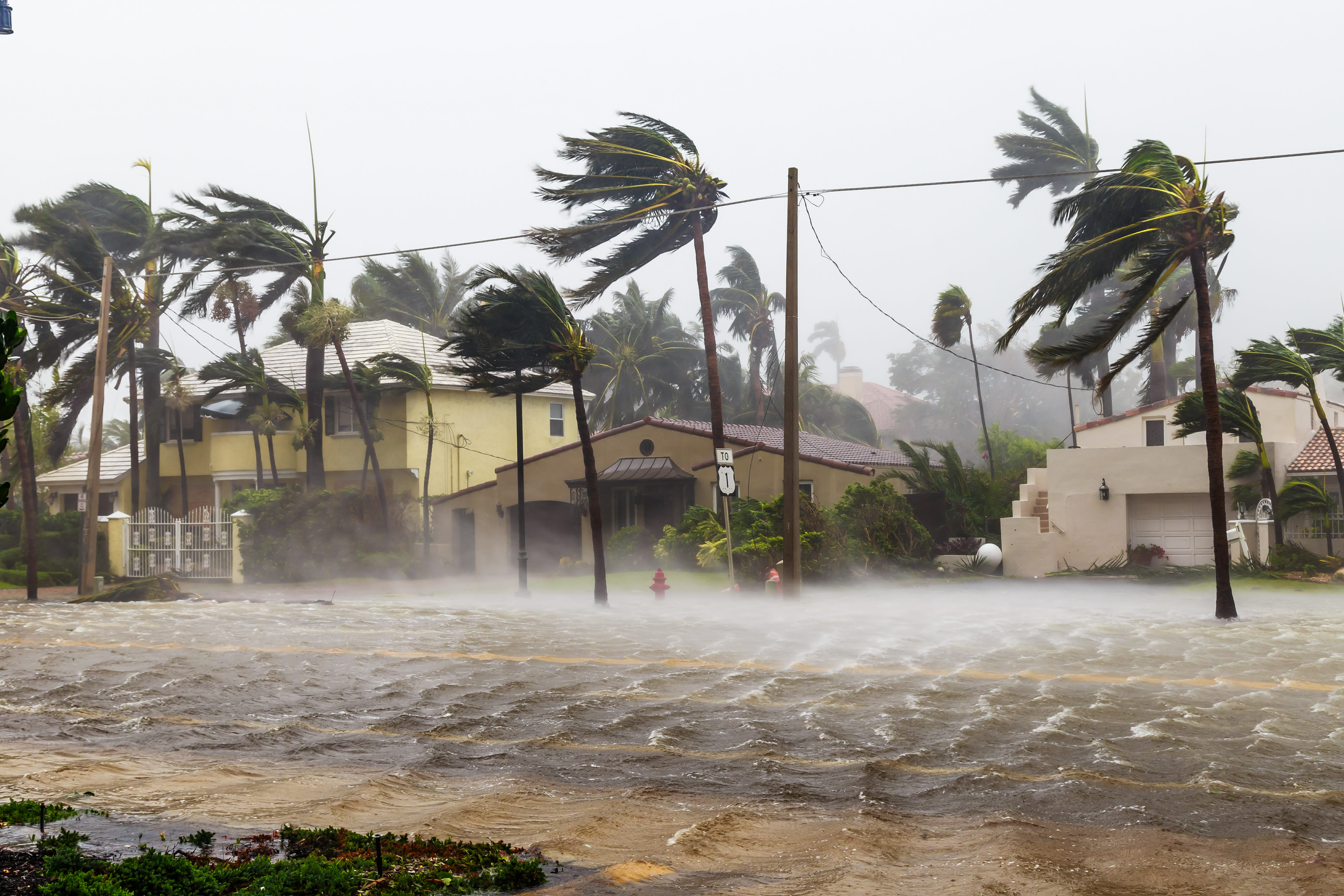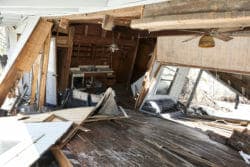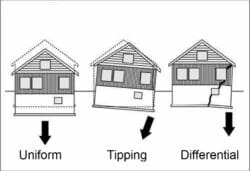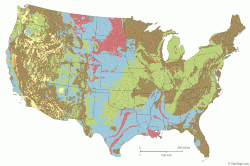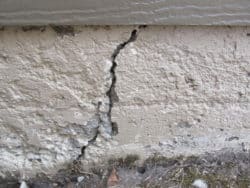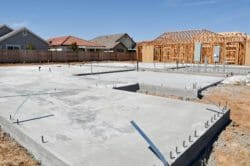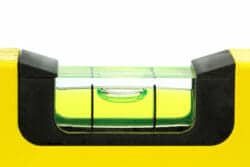Flood Damage to Foundations and What to Check
Home » Structural » Foundation »
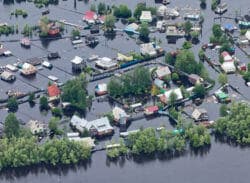
Foundation structural issues are often overlooked or missed when evaluating flood damage. In a large part because they don’t stand out like most other issues.
If a house is still standing after a flood, owners will usually have a million worries on their mind.
They’ll be thinking about what to do, family issues, insurance and work; plus they will be thinking about house issues like mold and mildew issues, will they need to replace drywall, insulation, siding, appliances, furnishings and clothes; seldom will they be thinking that there may be foundation and structural issues.
Insurance Companies, Appraisers and FEMA
Nearly all homeowner policies exclude flood damage to a home, however, a number of homeowners have taken the extra precaution and purchased “Flood Insurance.” With flood insurance much of the flood damage is covered but there are limits and exclusions that may affect how much actual coverage there is.
Governmental agencies such as FEMA often inspect a home after flooding. Their inspections may average 30 to 45 minutes and sometimes only 20 minutes; basically, a limited verification of your damage and disaster-related losses.
If an insurance appraiser is evaluating your flood damage he will often be concentrating more on things like contents, damage to your drywall, flooring and appliances, than concentrating on possible foundation structural issues.
Unfortunately, for many homeowners it may be up to them to first discover foundation problems, therefore, you should know some of the things to look for.
The severity of flood damage is basically based on 3 things
-
How high did the flood water get
-
How long the home was exposed to the flood waters
-
How fast the flood water flowed or moved and the amount of turbulence
Water moving at 10 miles an hour may exert the same pressure as wind gusts of 270 miles per hour
It’s easy to understand why floods can cause tremendous damage, including structural damage when we realize what a powerful force flood water is. The force of flood waters pushing against the sides of house can easily weaken it structurally or even knock it off of its foundation. If the foundation is constructed of pilings or piers the flood waters may damage them or cause erosion and/or scouring at the base of the piles or piers, resulting in the home incurring damage, tilting or even collapsing. (Read about different types of foundations)
Has the house been pushed or shifted partially off of the foundation?
The First Step is to walk around the house and look for evidence that the walls have shifted or moved on top of the concrete or block foundation.
Stand at each corner of the house and site down the wall where it connects to the foundation. Is it bowed, wavy or does it look like it has shifted or moved a little. If so, then check to see if it appears that the foundation itself has moved; is it bowed or leaning, is the top of it level and has the foundation cracked?
After examining the concrete or masonry foundation wall, examine the connections between the foundation and the wood wall sitting on top of it. The connections are generally bolts through the wood sill plate into the concrete or block foundation and occasionally may be metal straps holding the wood wall to the foundation. Also check if the wood sill plate is cracked, split or damaged. If the house is on a raised foundation or basement foundation you may have to crawl under the house into the crawl space or go into the basement to examine this issue.
Basically, you are going to check the concrete or masonry block foundation wall and the wood framed wall sitting on top of the foundation for signs of movement or damage.
Basement foundations
Basement types of foundations may experience the walls bowing, leaning or cracking. This may be the result of the powerful force of moving water or from the flood waters saturating the soils against the basement walls or saturating the soil under the footings of the basement walls.
Raised Foundations
Raised foundations may become damaged from the flowing forces of moving water or from the soil under the footings becoming totally saturated. Many raised foundations have post and beam interior supports that shift or become damaged in floods. When the soil under the footings become saturated the foundation may settle or drop. If there’s differential settlement the house is likely to incur even more damage. (Read about differential settlement)
Slab foundations
Concrete slab foundations usually suffer the least damage in floods, however, the structure sitting on top of them may suffer considerable damage. Erosion and under cutting (which is a form of erosion), can undermine the supporting soil of the slab. If a portion of the slab incurs significant erosion the slab may crack and a portion may settle or drop down somewhat; thus the slab is no longer level and the floor may slope in places. Repair and re-leveling can be expensive.
Expansive soil
If the foundation is built on expansive soils, then it may suffer more damage over time. At first when expansive soils get wet, they expand upwardly lifting the foundation; then as the soils dry out the soil particles shrink, and the foundation shifts downward. This up and down movement of the foundation can cause significant damage to both the foundation and the wood framing sitting on top of it. (Read about expansive soils)
Foundation Items to Check
Basement type foundation
- Basement wall and foundation
- Bowed, cracked, leaning
- Erosion
- Top of wall level?
- Basement slab
- Slab cracked or shifted
- Slab separated or pulled away from wall, gap between slab and wall
- If floor drain – is it operational, does the slab slope towards the drain
Raised foundation
- Bowed, tilted or leaning foundation, piers or piles in place or shifted
- Sill plates cracked or damaged
- Is top of foundation level
- Are old foundation cracks larger than before the flood?
Pile or Pier foundation
- Leaning
- Bowed, over-loaded because others are damaged or failing, putting more load on existing piles.
- Cracks or damage
- Scour evidence
- Erosion evidence (if erosion, may have lost part of structural stability, especially for lateral forces
- If there is cross or diagonal bracing, check it
- Wood rot and decay
Checking structural connections
Strong wind, as well as, soil and foundation movement can loosen or pull apart structural connection points. Metal straps, bolts, metal joist hangers, metal clips and metal beam saddles can bend, come loose, rust or corrode.
In checking for structural damage look at all metal pieces of hardware that are used to connect the wood framing members together or that are used to connect the walls to the concrete or masonry foundation. Note ones that are bent or damaged, ones that are connected to wood framing members or wood post, beams, piles or piers that are damaged or if the wood itself is cracked or deteriorated. (Learn more about structural damage caused by flooding)
Other Warning Signs of Possible Foundation Damage or Issues
Door and window
- Gaps around the doors or windows
- Openings out of square i.e trapezoidal shape
- Doors and windows difficult to operate, stick or will not open
- Trim around the doors or windows that have gaps at the corners
Floors
- Whole house tilted, thus all the floors slope
- Floor not level or sloping in places
- Spongy when walked upon
- Sagging in places
- Ceramic or other types of tile flooring cracked or loose
Siding
- Bricks cracked or have come loose in places
- Stucco cracks, especially diagonal cracks
- Siding bowed, out of alignment
- Siding hanging loose or missing in places
Drywall and plaster (other than water damage)
- Cracks or separations where walls meet other walls or ceilings
- Diagonal cracks in walls or ceilings
- Cracks at door and window corners
- Crown molding that has cracked or separated from wall / ceiling
Misc,
- Gap at garage door bottom or door no longer closes properly
- Kitchen cabinets separating from wall
- Sewer line backing up (may be cracked from soil under foundation shifting)
Note: Cracks that were not present before the flood and cracks that have gown larger are of particular concern.

- Owners should not only check the foundation itself for damage but should look for other warning signs that there may be foundation damage. Areas where there has been erosion of the soil supporting the foundation should be repaired in a timely manner, for things usually get worse over time and foundation damage is expensive to repair.
- Checking for foundation damage needs to done as soon as possible, especially if there is insurance coverage and remember that with all that is going on right after a flood, foundation damage can be easily overlooked. Documenting any damage with photos will also help show the insurance carrier your concern about the damage.
- Examine the drainage around you home. Has it changed, has there been erosion that needs to be repaired, for water is not a friend of foundations.
